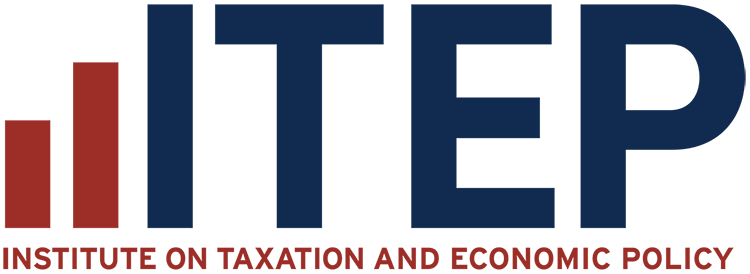The Opportunity Zone program, created in 2017 and made permanent under the 2025 tax law, creates a tax break for investments in certain lower-income Census tracts. Our analysis of the program finds:
- Recent changes to the program make modest improvements but fail to fix its key flaw: it benefits wealthy investors more than it benefits disadvantaged communities.
- States that conform to the federal tax breaks for Opportunity Zones will end up diverting resources from in-state priorities while assisting out-of-state investors and high earners.
- Instead, states should decouple from the Opportunity Zone program, preserving vital resources for in-state needs.
States Shouldn’t Provide Special Treatment for Opportunity Zones
The federal Opportunity Zone program provides generous tax breaks that drive investor behavior – and it has no business being in state tax codes. Here’s why:
Any behavior change is driven by federal law
While the efficacy of the program is unclear, to the extent that these tax breaks are incentivizing any worthwhile projects, this is an incentive driven by federal tax breaks. The tax treatment of OZs for state taxes, however, is not related to the federal benefits.
States can’t afford to lose the revenue
States that conform to federal Opportunity Zone benefits end up diverting significant state resources from other priorities. In Georgia alone, conformity to the federal OZ program costs about $30 million a year.
Conformity subsidizes investment in other states
By conforming to the OZ program, states would be subsidizing Opportunity Zone projects in other states across the country with in-state tax dollars. That’s because the program allows investors to engage in OZ investment anywhere in the nation, and their investments will receive state tax preferences regardless of the location of the project.
The Opportunity Zone Program Has Not Worked Well so Far
From their inception Opportunity Zones (OZs) suffered from the enormous flaw that there is no requirement that tax-subsidized investments benefit the people who currently live and work in high-poverty neighborhoods. Although modest improvements have been made, Congress did not address this key failure.
Opportunity Zones are geographic areas in which investments can benefit from favorable tax laws. An investor who has made large profits on investments can avoid paying capital gains taxes on those profits by funneling them into an OZ, and in doing so can defer and eventually entirely avoid paying taxes on their capital gains.
Supporters justify the program as an attempt to spur investment in parts of the country with high poverty and low growth. The results are underwhelming. In response to the program, governors designated a portion of eligible tracts as Opportunity Zones. Initially, the requirements were quite broad. Tracts had to have either a 20 percent poverty rate (the nationwide rate is about 11 percent) or a median income less than 80 percent of the median income in the closest metro area.
The program was promoted by wealthy investors, and its tax benefits were designed to flow overwhelmingly to similarly wealthy people. One Joint Committee on Taxation researcher found the average annual income of recipients who received the benefit in 2019 was over $1 million.
However, the results so far indicate that the program has largely failed to reach the populations that most need help. Through tax year 2022, $89 billion in investments went through the program. A team of researchers from the American Enterprise Institute, the U.S. Treasury, and elsewhere found that investors tended to choose projects “in Census tracts with growing populations and home values, in urban areas, within relatively prosperous counties, and in areas of the country experiencing more growth.” Of those projects, roughly 75 percent of the investment was in real estate—mostly in the Real Estate and Rental Leasing sector.
These projects were designed to be profitable investment properties for landlords, often high-end apartments and sometimes large suburban homes—not projects designed to benefit existing residents or ones necessarily eligible for other credits like the Low Income Housing Tax Credit. This profile of projects adds to gentrification and affordability concerns for the very residents it claims to help. Thanks to extra disclosure requirements in Ohio, researchers at Good Jobs First analyzed more detailed outcomes in that state. They found “OZs that have received investments tend to have gentrifying characteristics — becoming whiter and richer.”
Substantial as the dollar amounts are, assessments of the program are not encouraging. Money was spent in the zones. But those investments did not produce more work for residents—or for anyone, if job postings are any indication. They also did not help spur small business formation or activity. Instead, benefits are largely being captured by corporate landlords. A careful study from the University of California-Irvine using restricted-access government data found that despite its high expense the program produced “limited evidence of any positive effect” on residents’ finances. What difference there was between OZs and eligible tracts not selected, the researchers concluded, was likely from governors selecting places that were already growing.
New Tax Law Changed the Program But Did Not Fix Its Flaws
This year federal lawmakers tweaked and made permanent the Opportunity Zone program without changing its basic structure. Changes include:
- Making the program permanent and standardizing the timeline of benefits
- Offering a three times more generous benefit for investments in rural areas
- Narrowing which Census tracts are eligible and creating a recurring 10-year update process to the zones, with the first new map coming into effect in 2027
The limitation of eligible tracts is largely a positive change. Many investments in the existing program went to areas that were already growing and did not need special treatment. A tract now must have median family income below 70 percent (versus 80) of the state or metropolitan area (if the tract is in a metro area) or have a poverty rate of 20 percent and a median family income under a cap of 125 percent of the relevant state or metro area. These changes also eliminated the possibility of selecting tracts contiguous to eligible tracts that did not meet the regular criteria. This will enable better targeting by significantly reducing the number of eligible tracts by about 20 percent. The bill also created new reporting requirements—a crucial change for those who want to verify the effects of the program.
The Opportunity Zone program will now permanently benefit those who invest their capital gains in the following ways:
- Deferral of the initial capital gain for five years
- A 10 percent step-up in basis of their initial gain
- Preferential treatment of further capital gains of their investment, with full exemption for gains invested for 10 years
- A 30 percent step-up in basis for investments in rural areas
For example, instead of paying taxes on $1 million of capital gains, a wealthy investor could park those funds in an Opportunity Zone and immediately delay paying any taxes on the income for five years. If they do eventually pay taxes, the amount will be dramatically reduced, and if they stay invested for a decade, they pay nothing.
There is still no binding requirement that investments benefit existing residents. This is a glaring omission for states considering layering OZs into their own tax systems. Although many modest-income rural communities need investment, the enhanced rural benefits are not related to need.
States Should Fully Decouple From the Federal Opportunity Zone Tax Break
At a time when states are facing a darkening revenue picture and looming federal funding cuts to a range of critical programs, it is common sense for them to decouple from the federal Opportunity Zone program. Some states have already done so.
For instance, California, Mississippi, and North Carolina have decoupled from both individual and corporate Opportunity Zones at the state level. Massachusetts has decoupled from individual Opportunity Zone provisions only, and Pennsylvania has decoupled from corporate OZ provisions.
In all these states, governors have selected OZs and projects in those areas receive the federal benefit for investments sourced from anywhere in the country. In these cases, residents can take advantage of the federal program, but the state retains its own revenue and can invest that money in state.
All told, most states still conform to federal tax treatment under Opportunity Zones. As a result, they further subsidize wealthy investors’ tax breaks for investments made far outside of their own states’ borders and divert revenue from other investments that could better benefit their residents.





